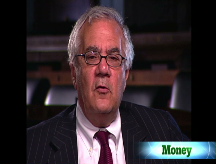No job turnaround on horizon
Economists don't expect job losses to end with August as they forecast a weak employment outlook for the rest of the year.
NEW YORK (CNNMoney.com) -- August was another bad month for the job market. But many economists also are predicting job losses to continue deep into 2009 as well.
The government reported on Friday that there were 84,000 job losses last month, worse than the 75,000 job losses that economists were predicting according to Briefing.com.
U.S. employers have now trimmed 605,000 jobs from the payrolls during the first eight months of the year. For the month of August, economists are predicting that.
The unemployment rate surged to 6.1%, a nearly five-year high and up from 5.7% in July. Economists were expecting the rate to remain at 5.7% in August.
While the monthly job losses so far this year have been modest compared to levels in past recessions, filings for initial jobless claims and continuing jobless benefits have both climbed in the last month to levels typical with a recession.
And beyond the headline numbers, there are a number of segments watched by economists, such as temporary workers, which have also turned lower in recent months.
So even though there have been some hopeful signs for the economy in recent weeks, including declining oil prices and a reading on second quarter economic growth that was stronger than both forecasts and initial estimates, most economists say it's much too soon to look for a true turnaround in the labor market.
"I think we'll continue to see {job losses and rising unemployment] unfortunately throughout the rest of the year. It's not until the first part of next year we'll see a sustained uptick," said Rich Thompson, vice president of Adecco Group North America, the world's largest employment services firm.
Thompson said one problem for job seekers is that the professional services sector, which includes accounting, legal and consulting firms among other businesses, are now shedding jobs as well. In the past few years, these businesses were a big engine of employment growth.
In addition, employment is a trailing indicator of economic growth, with job losses and rising unemployment common even after the end of a recession. Employers often make staffing decisions based on recent profitability and sales more than on forecasts for growth.
So even if the latest gross domestic product report -- which showed the economy grew at a solid 3.3% annual rate in the second quarter -- marks the start of a sustained turnaround, there might not be a pick up in hiring until next year.
But most economists believe that GDP reading is more of a spike driven by short-term issues, such as the arrival of economic stimulus checks, or factors that won't be maintained, such as a rise in exports. The common belief among many experts is that the economy will grow at a sluggish pace at best during the second half of the year.
"I'm not expecting increases in employment until next year because in the second half of this year we'll see very lethargic economic growth," said Joel Prakken, chairman of Macroeconomic Advisers.
The Conference Board has created a new reading called the Employment Trends Index, which combines a number of different economic readings to predict when employment will turn higher or lower. The index, which typically signals three to six months before job losses will turn to job gains, has yet to show signs of a recovery.
"We think the unemployment rate will keep growing, probably reach between 6 to 6.5% by mid 2009 and only start declining in the second half of next year," said Gad Levanon, senior economist at The Conference Board, before Firday's job report was released.
But when the economy turns around, many economists believe it's likely to start adding jobs much faster than it did at the end 2001 and 1991 recessions.
Job losses continued for the better part of 11 months after the end of the recession in March 1991 and for almost two years after the end of the 2001 downturn.
But those recessions followed periods of much stronger job growth than were seen during the expansion that took place for much of this decade.
So economists argue there were not as many "excess" jobs that employers needed to shed during the current slowdown. Thus, there should be more pent-up demand for new hires.
"It's more likely that once we have a recovery, the unemployment rate will start going down soon thereafter," said Levanon.
The University of Michigan recently published a forecast that calls for a gain of 900,000 jobs during 2009 and 2.6 million jobs during 2010, after a loss of 700,000 jobs this year. If the forecast for 2010 turns out to be right, that would be the biggest increase since 2000. Part of the reason cited for the strong bounce back is the relatively mild job losses so far in this downturn.
"Every recession dating back to 1953 produced considerably more severe job loss than we've just experienced," said Saul Hymans, professor emeritus of economics at Michigan. ![]()





